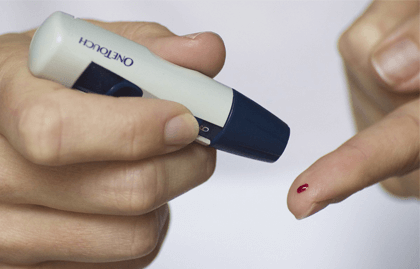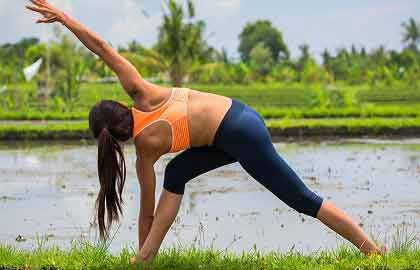How To Do Rabbit Pose (Shashankasana)

Meaning of Rabbit Pose
Shashankasana (Sasangasana) or the Rabbit pose is called so because the asana looks like a Rabbit in the ultimate position.sasaka= rabbit, asana = posture/pose
How to Pronounce
śaśangāāsana (Sasangasana)
Glimpses
Level: Basic and Intermediate
Duration: 60 to 180 Seconds
Benefits: Relaxing posture, tones the pelvic muscles, stimulates the abdomen organs, massages the abdominal muscles, activates the intervertebral discs of the spine, stretches shoulder, arms and back.
Improves: Back, Joints, Chest, leg muscles
Precautions Before Practicing Rabbit Pose (Shashankasana)
Yogis feel good stretch on neck, knees, spine and shoulders at the time of practicing Shashankasana (Rabbit Pose). It is always advisable to avoid this pose if you have injury to the neck, knees, spine and shoulders. You must avoid the pose if you have vertigo, glaucoma and high blood pressure.
How to Practise Rabbit Pose (Shashankasana)
- Step 1: Begin by doing Vajrasana or Thunderbolt pose. Keep your hands on your thighs and continue to breathe in an unperturbed manner.
- Step 2: Stand on your knees with inhale. Now bend forward with exhale and place your both palms on the mat. Inhale and be stable.
- Step 3: Place your crown on the mat with exhale.
- Step 4: Inhale and grab your heels with both hands. Make sure the back of your hands facing out and thumbs staying outside. Now pull on your heels with your hands and your head is going to touch the knees.
- Step 5: Stay in this position for 20 seconds to 40 seconds.
- Step 6: Now gently come up the same way you engaged in the position.
Tips for Convenience
Do not put more weight on your crown if you are not comfortable. Place your hands beside the head to keep your neck safe.
If you are not able to hold your heels you can use yoga strap. You can sue folded blanket under your crown and knees to feel comfortable.
If you feel dizzy at the time of practicing this pose it is advisable to come back to normal position.
Instructor Can Help You on Rabbit Pose (Shashankasana)
Practicing yoga should ideally be done under the guidance of an instructor to prevent injuries through wrong muscle movements, and to maximize the benefit you can get from a particular posture. This pose can be performed in different ways. Instructor can guide you the best way considering the flexibility of the yogi.
Benefits of Rabbit Pose (Shashankasana)
Once the asanas are practised regularly, it is possible to start benefiting from the effects they have on the body and mind. These consist of a greater alertness, clearer mind, heightened agility, enhanced emotional health and improved digestion.
- Shashankasana improves concentration as the brain and all the sense organs in the head get a good supply of blood.
- The spine obtains a frontward stretch and gets strong and flexible.
- It soothes the leg muscles as you fold your legs.
- The lower stomach receives better blood flow. So organelles that have been effective in the area.
- It fortifies the kidneys and encourages its task.
- It enhances the functionality of Pineal, Pituitary, Parathyroid and Thyroid glands.
- This Asana plays a significant role in curing disorders of the digestive system and decreases the extra fat in the waist and abdominal.
- It is the best therapy to control diabetes and cure constipation.
- It helps yogis to fall asleep quickly.
- It allows you to be relaxed and calm.
- Grows your remembering ability if this asana is done regularly.
Variations of Rabbit Pose (Shashankasana)
There are many variations of Shashankasana. One of the most well-liked variations is performed by keeping the hands at the back, rather than bringing it to the front.
- To perform the variation, begin by doing Vajrasana(kneeling pose).
- Then bend your body ahead, until your head is in touché with the ground of you (or bend as much as you can).
- Simultaneously take the hands and pull them behind the back, clasping the right wrist with the left hand.
- Exhale while bending down.
- Stay in this pose for as long as comfortable. During the last position, you can do relaxed and slow breathing.
- To release the posture, again lift the body up to the raised position as you breathe in.
- The benefits of this variation are similar to the benefits mentioned in the main asana section.
The Science behind Rabbit Pose (Shashankasana)
Here are many benefits of this asana including relaxation, relieving depression and much more. Age or flexibility is one of the barriers to perform or practise asana but Shashankasana is one of those which is very easy to perform and can be done by anyone regardless of age. This asana is performed by lowering your body and placing your head with the floor. When you practise this asana, it extends your spinal cord & help to relief from back pain.
Preparatory Pose
- Reclining Hero Pose (Supta Virasana)
- Reclining Bound Angle Pose (Supta Baddha Konasana)
- Wide-Angle Seated Forward Bend (Upavistha Konasana)
- Reclining Hand-to-Big-Toe Pose (Supta Padangusthasana)
- Bound Angle Pose (Baddha Konasana)
Follow-up Pose
- Bharadvaja’s Twist (Bharadvajasana)
- Half Lord of the Fishes Pose (Ardha Matsyendrasana)
- Eagle Pose (Garudasana)
- Seated Forward Bend (Paschimottanasana)
- Marichi’s Pose (Marichyasana III)












